Precision technologies are game changers for future space exploration
Technologies have played a vital role to provide practical solutions to expensive and risky space projects. With the advent of more precise instruments and techniques, observations in more distant space regions are being enabled which could hold the key to understanding the origins of the universe.
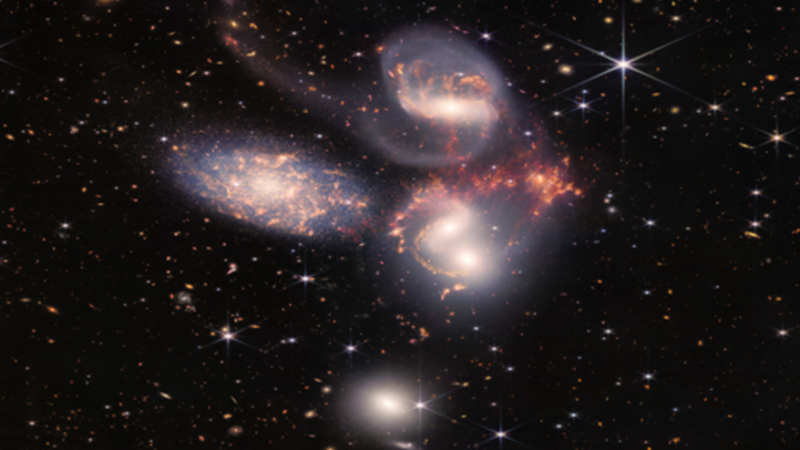
Enhancing the quality of measurement
Precision technologies are equipment and instruments used to achieve accurate measurements of cosmic bodies and space events [1]. They are capable of providing high-resolution images that contain detailed data of e.g. surface topography, gas content, color and intensity of light in different spectrums, or even information about atmospheric features and structure.
The capabilities, measurement sizes, and uses of precision technologies vary widely depending on the application and their expected function in a particular system (a telescope for instance). Several technologies are available and are used to enhance the quality of measurements that scientists aim to achieve in space exploration.
Equipment such as mechatronic systems (for optical applications and remote sensing), metrology (useful also for calibration), vacuum clean chambers (equipment testing), lasers (long distance precision measurement), spectrometers (measure interactions of ions and electrons), or spectrograph (use wavelengths to reveal e.g. a planet chemical composition) are just a few of the important technologies that are enabling more accurate and smaller measurements up to the atomic level far in deep space.
In this article, we will learn some insights regarding the need for smaller and more precise measurements that precision technologies are enabling in space exploration. We touch upon space missions benefiting from the advances of high-tech measurement tools and examine the contributions of the Dutch industry to current space exploration missions. The article closes with an invitation to the 2022 Precision Fair by Mikrocentrum.
The demand for smaller and more precise measurements
The desire to make accurate analysis about space and understand our relationship with the universe has fueled research into measurement and observation technology for millennia. Evidence suggests, for example, that humans have experimented with different techniques to explore space for over 30,000 years with methods that have ranged from basic mathematics to simple observation[2].
It was however the invention of the telescope by Gaileo in 1609, one of the most important discoveries that impacted space research by enabling scientists to observe the night sky with far more clarity than in the past[3]. Another important contribution was the first image of stellar spectra made by Dr. Henry Draper in 1872 whose use of photography would enable increased accuracy of cosmic pictures[4].

Although there are many different ways to observe the universe were being established throughout the history of astronomy, the discovery of infrared light by Sir William Herschel in 1800 would mark a breaking point, mainly due to the fact that it enhanced the capability of the human eye to see beyond visible light[5].
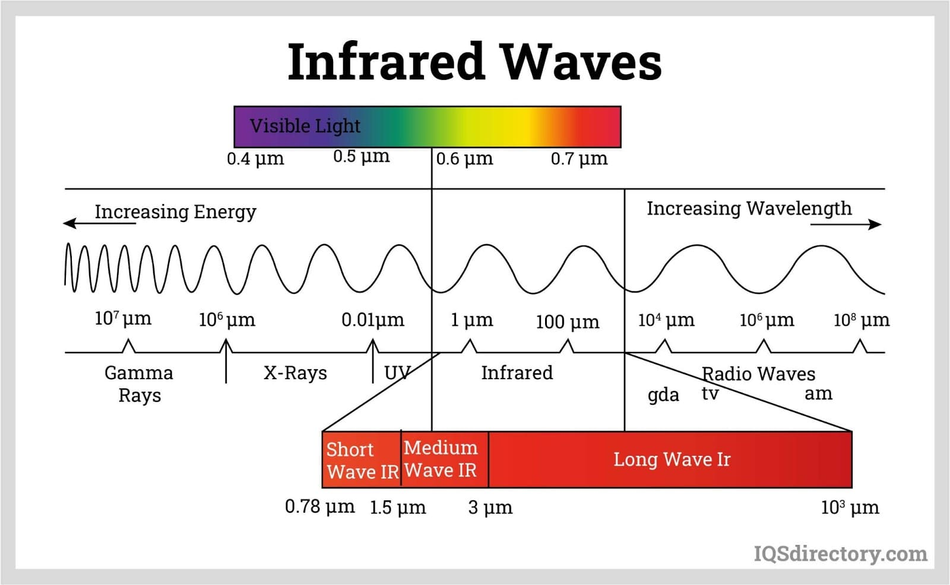
Thanks to the discovery of infrared, experiments such as the thermocouples used by Charles Piazzi Smyth (1856) were possible, allowing as a result the detection of infrared light from the moon. Others, like the use of lead-sulphide (PbS) detectors (1950s) to study infrared light between 1 and 5 microns allowed astronomers to study the infrared light from space, out to a wavelength of about 3 microns. During the same years, Harold Johnson (1959) defined the first infrared magnitude system extending near-infrared research up to a wavelength of 4 microns. This, consequently, would facilitate looking at stars in different ways with the use of newer near-infrared bands.
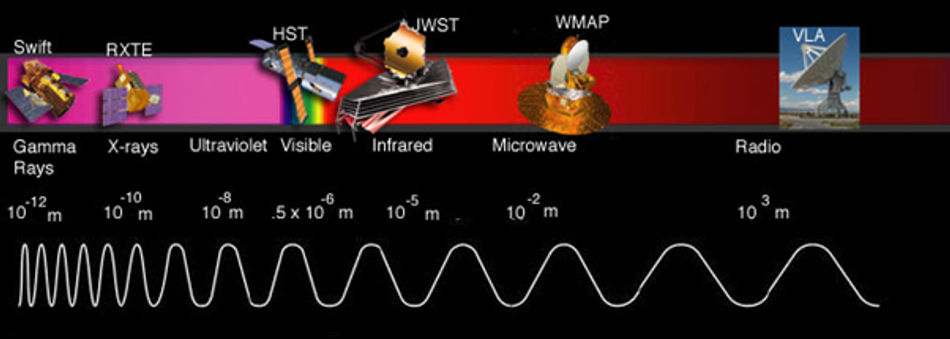
Later in the 1980s, the development, testing, and improvement of infrared detectors, caused a giant leap in observational capability thanks to the increasing efforts of institutions like the NASA or the ESA, to bring about more collaboration between university researchers, aerospace and industrial firms[5].
From this point forward, sensitivity, efficiency, and resolution rapidly increased. Improvements could be reflected in projects like:
- Infrared Space Observatory (ISO) has a capability thousand times more sensitive than IRAS (the first ever space-based infrared observatory), which would reach infrared wavelengths between 2.5 to 240 microns (1995).
- Spitzer Space Telescope (2003) with the capability of providing imaging with two channels (at 3.6 and 4.5 microns)
- Herschel (2009) was the only space facility dedicated to the submillimeter and far-infrared part of the spectrum, performing imaging photometry and spectroscopy covering approximately 55 to 672 microns.
And up to the most recent space-telescope , the James Webb (JWST) whose design and technological advances would allow astronomers to see as far back as 200 million years after the Big Bang [8].
James Webb Space Telescope
The James Webb Telescope (JWST) is a marvel of modern engineering. It is the result of the immense efforts done throughout history to improve the capacity of equipment to observe space, and it represents some of the latest advances of precision technologies.
The Telescope is a large (6.6m), cold (<-223.15℃), infrared-based observatory developed by NASA, ESA, and the CSA (Canada's Space Agency) to enable breakthroughs in the understanding of galaxy, stars, and planetary formation and evolution [6].
It is the successor of the Hubble Space Telescope (HST) and has the capability to detect infrared radiation by operating in lower frequency ranges between near-ultraviolet and visible light, as well as near-infrared (0.8–2.5 μm)[7]. With this spectrum, the clarity and quality of images of faint and distant cosmic bodies has significantly increased, proving to be the right replacement for its predecessors.
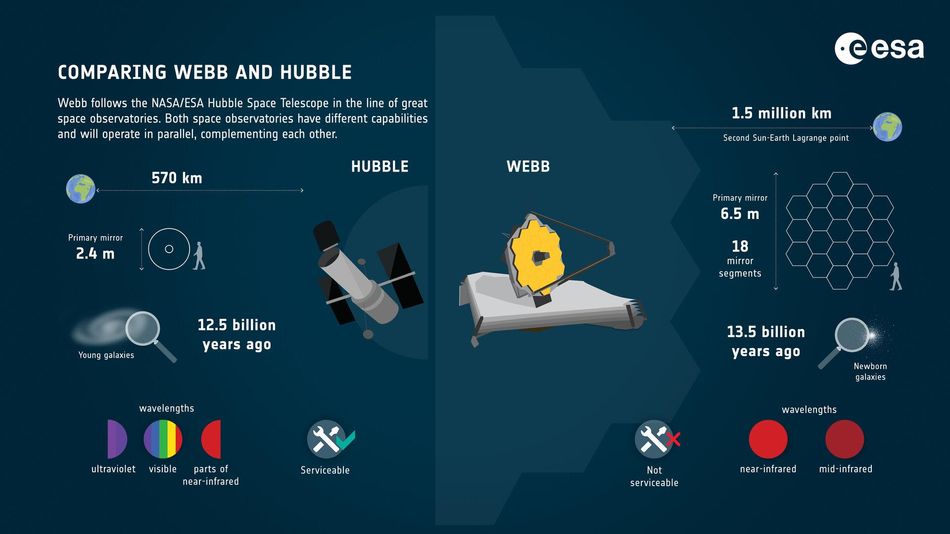
The JWST is an optimized space observatory powered by infrared technology[8]. Among several equipment innovations (such as its foldable design), the JWST carries some of the most advanced precision technologies including instruments like Near-IR Camera (NIRCam), a Near-IR Spectrograph (NIRSpec), a near-IR Tun- able Filter Imager (TFI), and a Mid-IR Instrument (MIRI)[6].
With this equipment and the constellation of technologies embedded in its body, the JWSM is expected to:
1. Observe farther into the universe than ever before (1.5 million km from Earth)
2. Search for the first stars and galaxies created after the Big Bang.
3. Provide information to astrophysicist to better understand how planets, stars,
and galaxies are born and evolve over time
4. Explore distant worlds and study our solar system.
5. Determine the potential for life on planets around other stars.
The JWST history in a nutshell
Its history dates back to 1989 when the committee “HST and Beyond” formed by scientists in charge of evaluating astronomy advances, suggested in a series of papers the need for a mission that could deliver high-definition images of distant galaxies and space objects with spectroscopy techniques superior to those of the HST [6].
As a response to this suggestion, NASA initiated the Next Generation Space Telescope (NGST) program in the 1990s. The program kickstarted with fundamental developments and designs, while a selection of preliminary equipment would take place. In 2002, the NGST program became known as the James Webb Space Telescope in honour to former Space Agency Administrator James Webb and would become the most expected space-exploration project developed in cooperation worldwide[8].
After the 1990s when budget was ensured and partnership for development was established, the initial design phases and equipment tests started in 2005. The selection of the rocket launcher Ariane 5 by ESA was delivered during this period. Likewise, the design of the powerful NIRSpec started to take shape, showcasing equipment for measurement that would perform in both single- and metaobject spectroscopic observations over the 0.6–5.3 µm near-infrared wavelength range at three spectral resolutions[9].
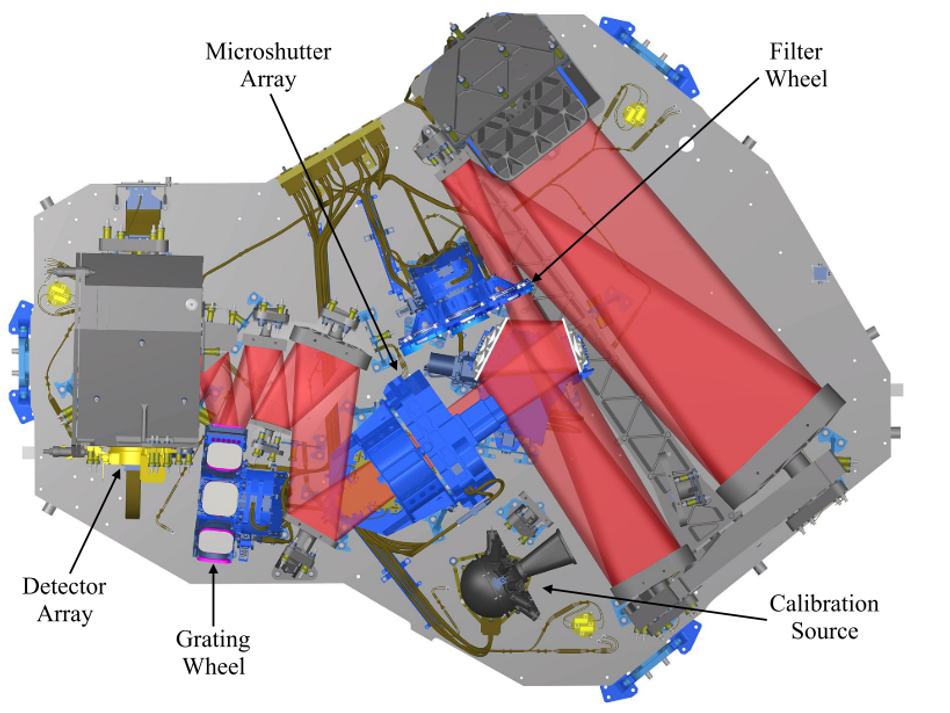
By 2007, NASA gave green light to the construction of the Integrated Science Instrument Module (ISIM) to check the equipment performance under extreme temperature conditions.
By 2018, other important technologies were concluded including its impressive 18 foldable beryllium-gold plated hexagonal mirrors needed to capture images. The 18 mirrors are supported by interferometry technologies like the PhaseCam[10] which is used to verify that the surfaces of the JWST are synchronized and adjusted as perfectly as possible.
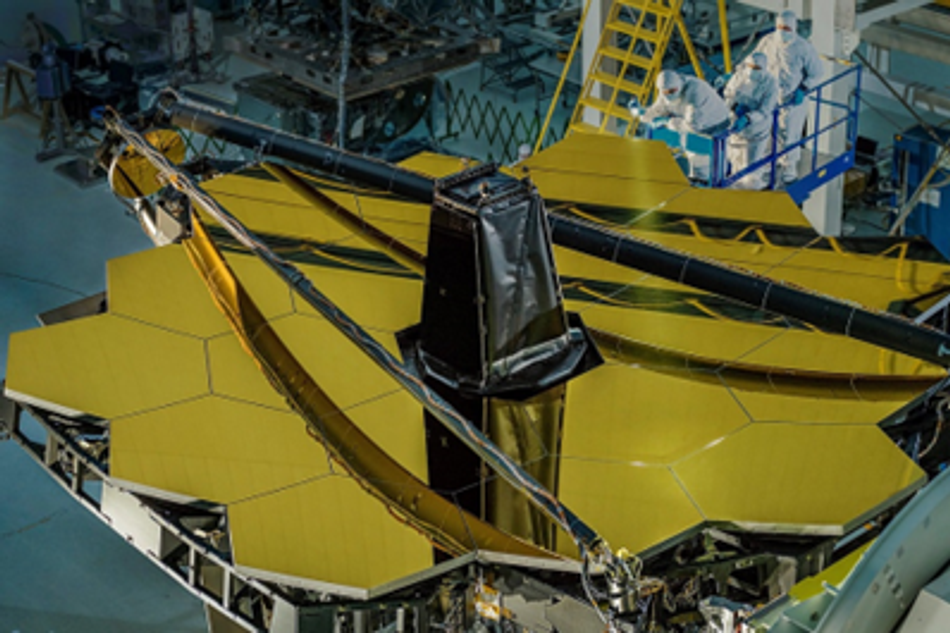
The JWST would surpass in size (half a 737 aircraft), power (18 mirrors), and capability (1.5+ million km away) previous space-based observatories (Figure 2). It hosts some of the most advanced technologies in the world and it is currently in full operation after its successful launch on the 25th of December of 2021.
The Einstein Telescope (ET2SMEs) Project
Beyond space-based observatory missions like the JWST, efforts to develop terrestrial third-generation observatories and telescopes are already underway[14]. In Europa for example, the construction of an underground gravitational wave observatory is looking highly promising.
The EU-proposed third-generation Einstein Telescope expected to be finished in 2035, will be built upon the principles of measuring gravitational waves. It is a futuristic observatory and measuring infrastructure developed to be 10 times more sensitive than current instruments in comparison to the Laser Interferometric Gravitational-Wave Observatory (LIGO – Virgo Collaboration) which in 2015 was able to provide up to 50 measurements of different gravitational wave phenomena[15].

In general, the telescope will serve to test the general theory of relativity in strong field conditions. And for this, it will make use of technologies capable of measuring miniature changes (smaller than an atomic nucleus size). This will occur at low and high frequencies of gravitational wave components along the two 10 km arms that extend the telescope's main structure.
With advanced technologies in the field of optics, vibration-free cryogenics, or interferometric detectors like the LIGO[15], GEO600 , and the 10m-Prototype scientists are looking to reach this aim and solve answers ranging from cosmic activity, the rate of the expansion of the universe, formation of black holes or even clues about the big bang theory[15].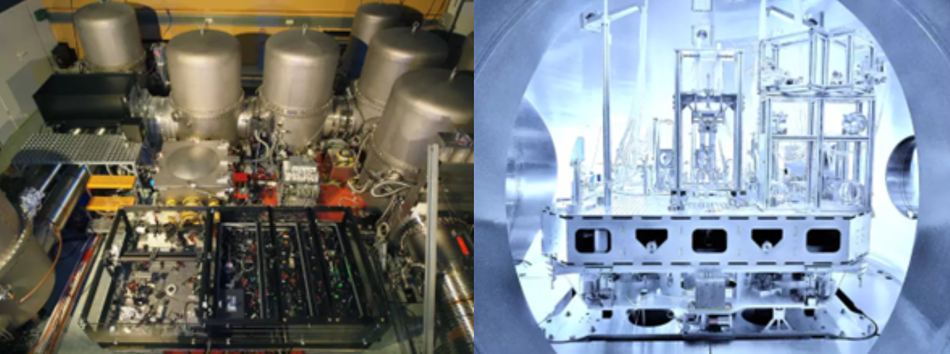
Synchrony and collaboration
For projects like the LIGO, the Hubble, the Einstein, or the James Webb Telescope, success goes beyond high tech. It is only possible through well-coordinated multi-stakeholder and cross-sectorial cooperation.
It is why, taking the case of the Einstein Telescope, initiatives like the ET2SMEs are designed to be enablers for participation. By forming consortiums, developing mechanisms and resources are put in place so making complex Astro-physical projects can become a reality.
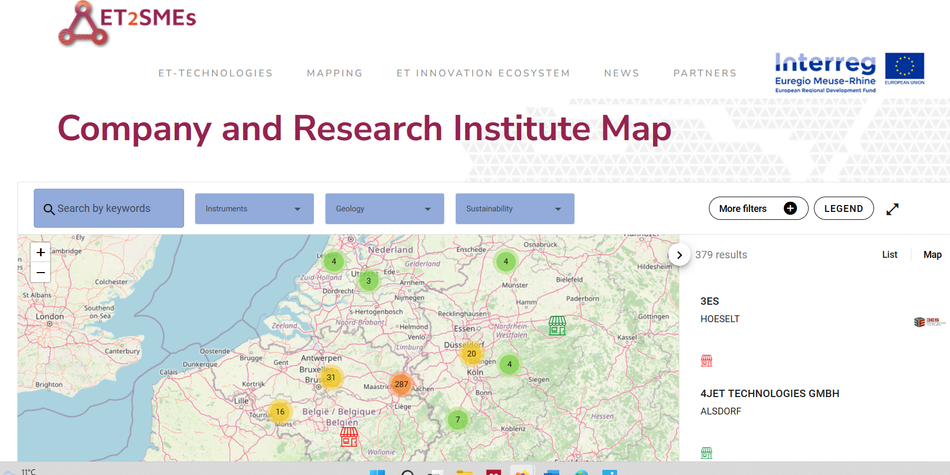
Under this idea, the ET2SMEs is a cooperative project with more than 40 research institutes involved. It serves as a catapult to promote the role of Europe as a leader in space research and opens the possibility for small to medium size (SMS) companies in the tech sector to access the millions of euros designated for preparatory initiatives and projects, the development of new products, processes, and procedures necessary for the Einstein Telescope overall project[17].
Furthermore, although projects like the Einstein Telescope or the JWST are developed separately by different entities and with different economical intentions, they are part of dozens of consortiums in several countries in which high-tech development and research take place.
Case Study: contributions of the Dutch industry in advancing space exploration
Precision technologies are one of the foundations of the Dutch knowledge and innovation economy. To achieve a high level of success in complex high tech projects, the industry is formed by consortiums dedicated to providing solutions and support for astronomical missions as well as many other areas. Examples of organizations leading scientific consortiums are the Netherlands Research School for Astronomy (NOVA) or the Dutch Research Council (NWO), the most important science funding body in Holland. They in particular, reflect the cooperative work needed for long term, expensive and complex projects[21] and one of their aims is to maximize participation and financial return to Dutch companies.
Another important actor within the NWO is the ILO-net (Dutch Industrial Liaison Officers) which works as the connecting force between Dutch high-tech companies and what is termed ‘Big Science’ -groundbreaking fundamental research that is carried out in large international collaborations[21].
Through Big Science, the companies are encouraged to deliver the best technological solutions that can attract major assets for them and the big complex international projects which they participate. This is one of the reasons by why the Dutch industry excels in its work.
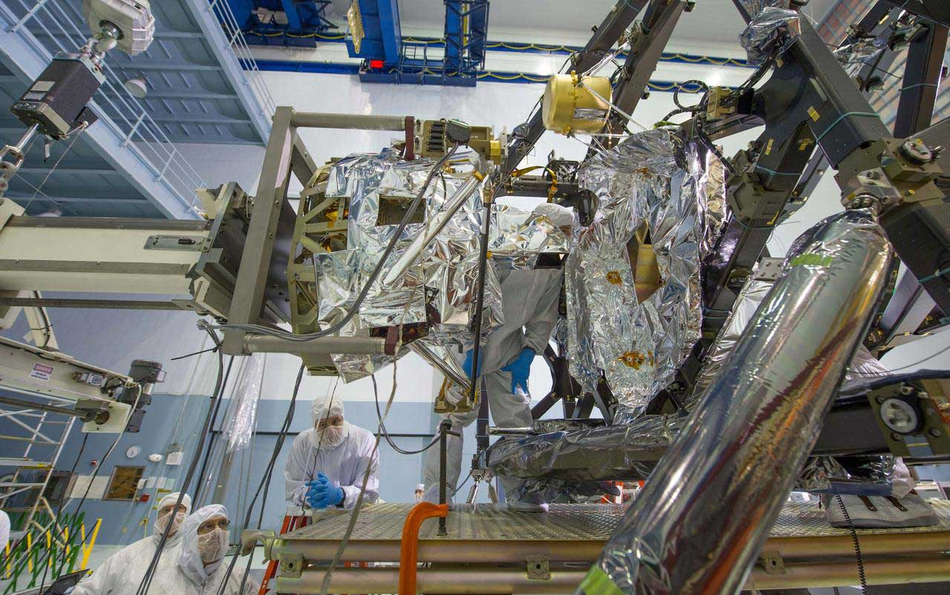
For example, the Mid InfraRed Instrument (MIRI) Spectrometer for the JWST can be highlighted as one of the biggest contributions led by NOVA. Within this consortium, companies like TNO, ASTRON, and SRON contribute with other technologies including among many lasers or optical devices. TNO for example also participated in designing the first Faint Object Camera for the Hubble[19].
Beyond JTWS, the precision industry is actively working in the design and construction of the Einstein Telescope, taking part in different work groups including the ET Pathfinder, E-Test, and ET2SMEs or the Einstein Telescope Technologies (ETT)[20].
Precision Fair 2022
The Precision Fair has been developed as a trade point for the entire precision technology value chain with a focus on presenting players in the Dutch Industry: from mechatronic engineering & systems, metrology, vacuum & clean, micro processing & motion to production for high precision.
Organized by Big Science and Mikrocentrum, this year’s fair is aiming to enable the best conditions to push forward the precision technology sectors, while providing spaces for meetings, collaboration, and sharing of knowledge of visitors and exhibitors.
The fair is taking place in Brabanthallen, ‘s-Hertogenbosch (Holland) on the 16th and 17th of November 2022. Registration is free.
Engineers, scientists, and SMSs working in the precision technology ecosystem will be able to network, attend lectures and keynotes and view cutting-edge technology... and don’t miss the opportunity to witness some of the most important contributions of the Dutch Industry to space science.
Key information:
When: 16-17 November 2022
Where: Mikrocentrum
De Run 1115
5503 LB Veldhoven
The Netherlands
How to attend: Register for free here.
References
- Gold RE, Jenkins RE. Advanced space instruments. Johns Hopkins APL Tech Dig (Applied Phys Lab. 1999;20(4):611–9.
- Wikipedia. History of Astronomy. [Internet]. 2022. Available from: https://en.wikipedia.org/wiki/History_of_astronomy
- NASA. Telescope History. [Internet]. 2003. Available from: https://www.nasa.gov/audience/forstudents/9-12/features/telescope_feature_912.html
- Peres IM, Jardim ME, Costa MF. The role of the artificial lights in the scientific photography of the XIXth century. Third ICESHS, Austrian Academy of Sciences, Vienna 2008. Session 2.
- CoolCosmos. INFRARED. World Universe Missions Gallery. [Internet]. 2022. Available form: https://coolcosmos.ipac.caltech.edu/timelines#24
- Gardner JP, Mather JC, Clampin M, Doyon R, Greenhouse MA, Hammel HB, et al. The James Webb space telescope. Space Sci Rev. 2006;123(4):485–606.
- Wikipedia. James E. Webb [Internet]. 2022. Available from: https://en.wikipedia.org/wiki/James_E._Webb
- Pelliccia L, Pelliccia L, Stief P, Dantan J, Etienne A, Siadat A. ScienceDirect ScienceDirect Applicability of simulation for May software simulation software for participatory for workplaces and participatory design design for industrial industrial workplaces and processes processes A new methodology to analyze the fun. Procedia CIRP [Internet]. 2021;99:122–6. Available from: https://doi.org/10.1016/j.procir.2021.03.019
- Jakobsen P, Ferruit P, Alves De Oliveira C, Arribas S, Bagnasco G, Barho R, et al. The Near-Infrared Spectrograph (NIRSpec) on the James Webb Space Telescope: I. Overview of the instrument and its capabilities. Astron Astrophys. 2022;661:1–22.
- NASA. Webb Telescope Spinoff Technologies Already Seen in Some Industries [Internet]. Available from: https://www.nasa.gov/topics/technology/features/webb-spinoffs.html
- House Committee on Science, Space and TR. Witnesses Discuss Challenges for the James Webb Space Telescope [Internet]. 2011. Available from: https://republicans-science.house.gov/2011/12/witnesses-discuss-challenges-james-webb-space-telescope
- Wikipedia. James Webb Space Telescope [Internet]. 2022. Available from: https://en.wikipedia.org/wiki/James_Webb_Space_Telescope
- Baker D. The James Webb Space Telescope: Complete History, Specs, and More [Internet]. 2022. Available from: https://history-computer.com/the-james-webb-space-telescope/
- Brand J van den. Einstein Telescope: A unique chance for Europe [Internet]. 2021. Available from: https://www.openaccessgovernment.org/einstein-telescope/113902/
- Institute MP. Einstein Telescope [Internet]. 2022. Available from: https://www.aei.mpg.de/einsteintelescope
- Abbott et al. Reports on Progress in Physics LIGO: the Laser Interferometer Gravitational-Wave Observatory. Rep Prog Phys [Internet]. 2009;(72). Available from: https://iopscience.iop.org/article/10.1088/0034-4885/72/7/076901
- Interreg. SMEs benefit from Einstein Telescope [Internet]. ET2SMS; 2021. Available from: https://et2smes.eu/wp-content/uploads/2021/04/ET2SMEs-press-release.pdf
- JRC and Nova Institute. Jobs and Wealth in the European Union Bioeconomy [Internet]. Available from: https://datam.jrc.ec.europa.eu/datam/mashup/BIOECONOMICS/index.html#
- TNO. TNO Contributes to James Webb Telescope and Space History [Internet]. 2021. Available from: https://www.tno.nl/en/newsroom/insights/2021/12/tno-contributes-james-webb-telescope/
- ET2SMEs. ET - Technology Catalog [Internet]. 2022. Available from: https://et2smes.eu/et-technologies-catalogue
- BigScience. About the ILO-net. [Internet]. 2022. Available from: https://www.bigscience.nl/en/

